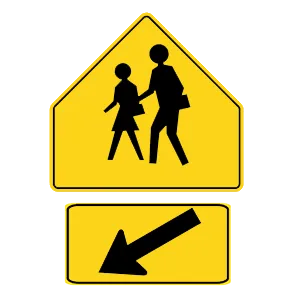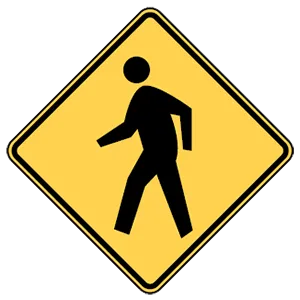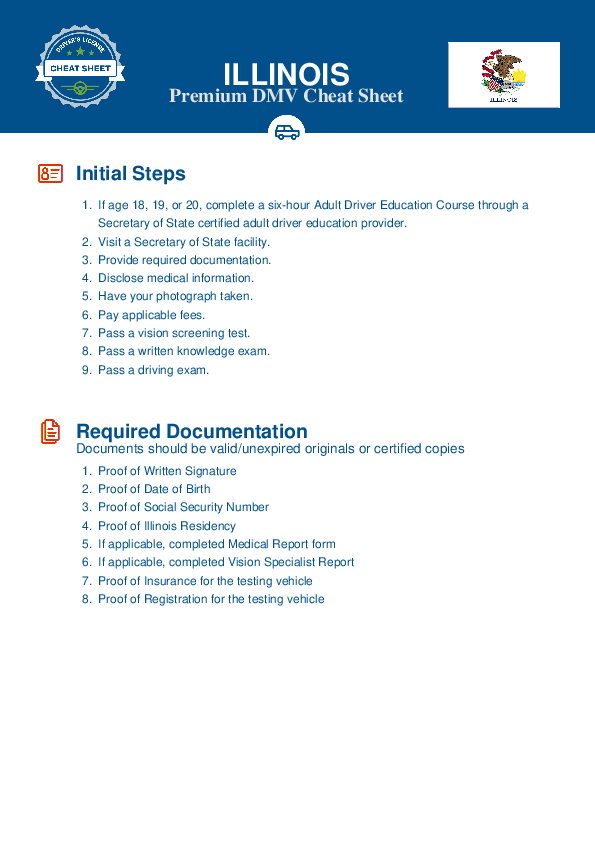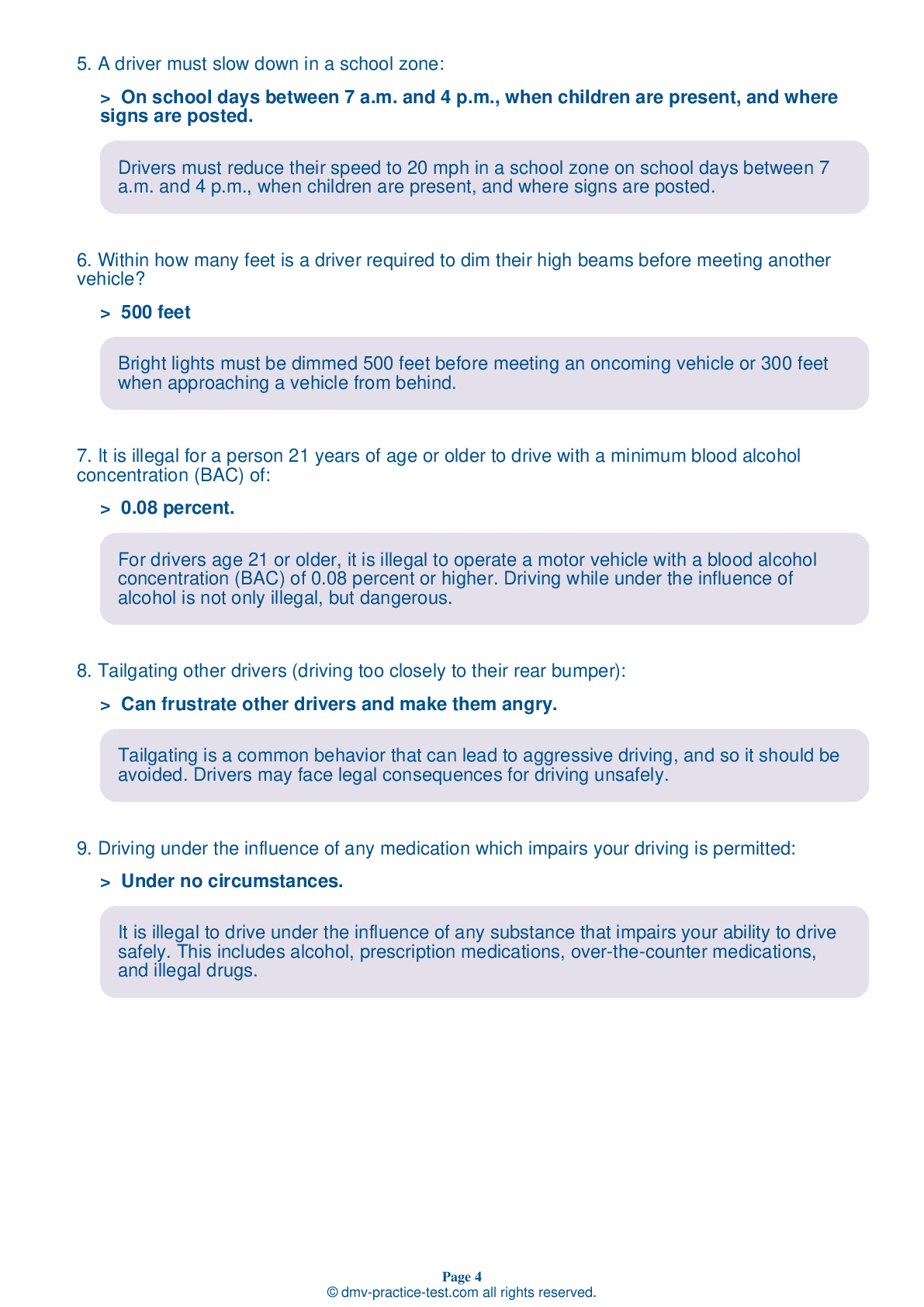FREE Illinois DMV Practice Test #2 Page 2 of 3
For January 2025, this set of Illinois DMV practise tests has been updated. It includes questions based on the most important traffic signs and rules for 2025 from the Illinois Driver Handbook. To study for the DMV driving permit test and driver's licence exam, use actual questions that are very similar (often identical!) to the DMV driving permit test and driver's licence exam.
Each question on the practise exam has a tip and explanation to help you recall the ideas. Questions about traffic rules, traffic signs, and driving statutes, as well as information from the Driver Handbook, will be included in the written portion of the official DMV test.
You must properly answer 38 of the 35 questions to receive a passing mark. To help you prepare for your Illinois instruction permit or driver's licence, take our DMV practise test.
The DMV exam is offered in a variety of languages.
Using any form of testing help will result in an automatic fail, and the DMV may take further action against your driver's licence, so avoid it.
13 . When approaching a disabled pedestrian using a guide dog, white cane, or other assistive device, a driver should yield the right-of-way.
A pedestrian with a disability who is utilizing a guide dog, a white cane, a wheelchair, or another assistive device, whether on a sidewalk or roadway, has the right-of-way and is granted the same rights as any other pedestrian.
14 . This sign is a:

Warning signs are usually yellow with black markings. They alert you to conditions that are immediately ahead. There may be an upcoming change in traffic direction, a steep downgrade, or another potentially hazardous situation that requires action on the part of the driver.
15 . This symbol is used for:

A reflective orange triangle on the rear of a vehicle means it travels only at slow speeds. You may see this sign on roadwork equipment, farm vehicles, or horse-drawn wagons and carriages. It appears as a solid orange triangle during the day and a hollow red triangle at night.
16 . As you approach the top of a hill, you should:
You may not know what is on the other side of a hill or just around a curve, even if you have driven the road many times. If a vehicle is stalled just out of sight on the roadway, you must be able to stop. Whenever you come to a hill or curve, adjust your speed so you can stop if necessary.
17 . At a school crossing sign, you should:

Pentagonal signs mean you are approaching a school zone and/or school crossing. When you see these signs, be alert and prepare to stop.
18 . It is permissible to pass on a two-lane two-way roadway within 100 feet of an intersection or railroad crossing.
There are number of situations in which it is prohibited to pass on a two-lane two-way road. One of these is when you are within 100 feet of an intersection or railroad crossing.
19 . Speeds should be reduced below the posted speed limit for which of the following reasons?
Regardless of the posted speed limit, weather and traffic conditions may make it necessary to drive more slowly. A driver must take care to slow down when approaching and crossing an intersection, going around a curve, approaching the top of a hill, or traveling on a narrow and winding roadway. A driver must be aware that there may always be dangers present due to pedestrians, traffic, weather, mechanical problems, or road conditions.
20 . A parent or legal guardian may request that the driver license of a minor be cancelled at any time prior to age 18.
A 16- or 17-year-old driver must have the written consent of a parent/legal guardian to obtain a driver license. The parent/legal guardian who gave initial consent may cancel the minor’s license at any time, for any reason, until the driver turns 18.
21 . Work zone barriers, drums, cones, and signs are used to:
Work zones on highways have become increasingly dangerous places for both workers and drivers. When approaching a work zone, watch for materials such as cones, barrels, signs, large vehicles, and workers in brightly colored vests to warn you and direct you.
22 . This road sign means:




